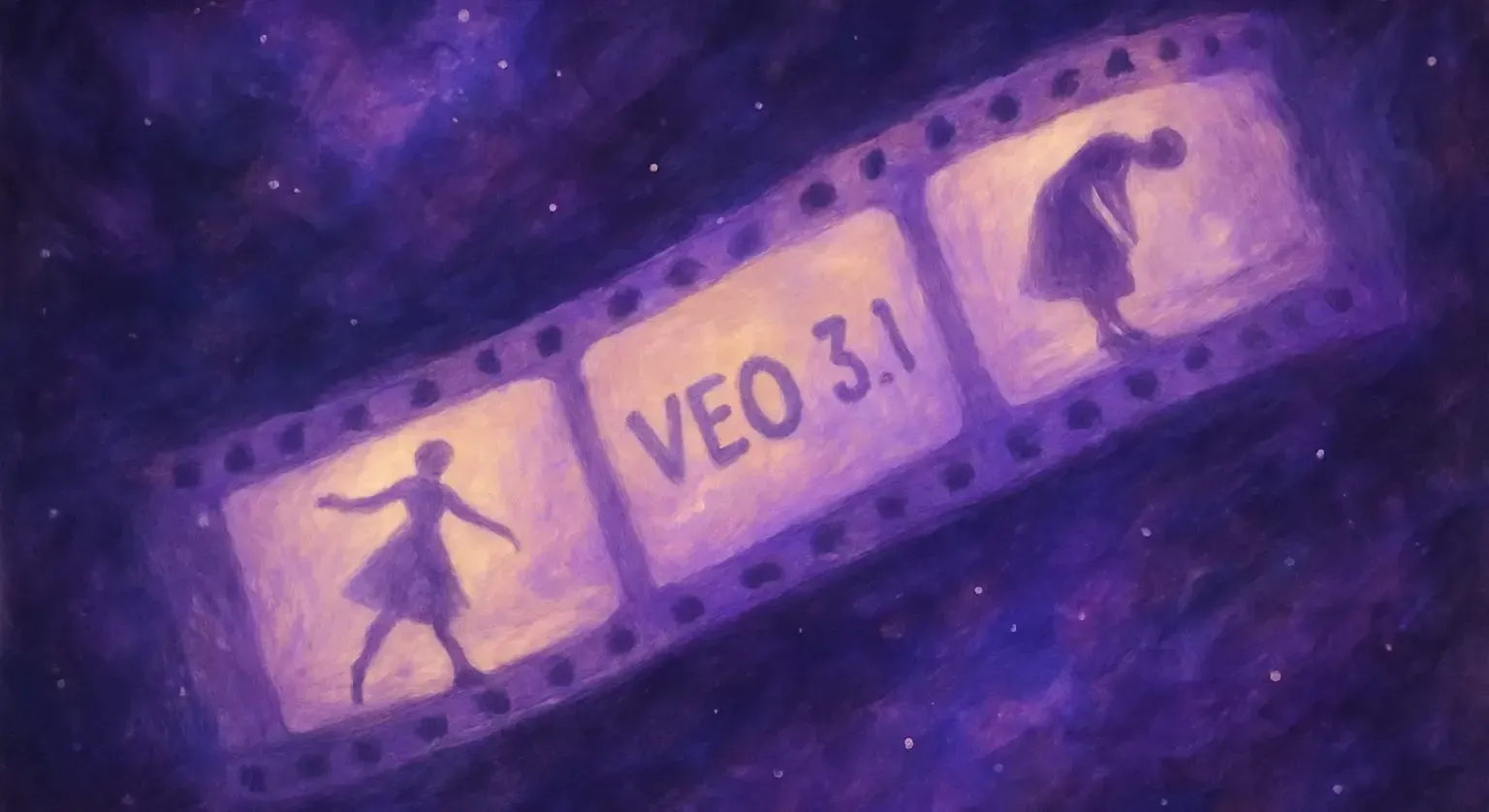Google Veo 3.1 Explained: Last-Frame Support & Reference Images Are Here
If you thought Veo 3 was impressive, wait till you meet Google Veo 3.1. It keeps everything that worked… and fixes what didn’t. Here’s what’s new and why it matters. Let’s break it down!
Can't wait to try it? You can start using Google Veo 3.1 right now in our Video Generator!
What is Google Veo 3.1?
In short: Veo 3.1 is Google’s next-gen video generation model, powering both Text → Video and Image → Video modes, with native audio built right in.
It comes in two versions:
- Veo 3.1: includes all the advanced guidance tools.
- Veo 3.1 Fast: a lighter, quicker variant that still outperforms Veo 3, but skips some of the heavier features.
Under the hood, the goals of 3.1 over 3 are clear: improve in every aspect, from creative control, to audio and visual quality.
What Veo 3 gave us (and where it fell short)
Before diving into the upgrades, let’s give Veo 3 some credit. It already pushed AI video miles ahead of anything before it.
What Veo 3 delivered:
- It moved AI video beyond silent clips: visuals plus native audio (sound effects, ambient noise, lip-synced speech) all in one.
- Better prompt adherence vs earlier models.
- 1080p and vertical video formats, great for social media content.
Where it hit limits:
- You could only specify a first frame in Image to Video mode.
- Style or object consistency sometimes drifted as the video played out.
- Audio, though groundbreaking, could sound a bit artificial.
- There was no way to guide how new objects or characters appeared mid-scene.
None of that was a dealbreaker; it was just the natural growing pains of a new medium. But for creators craving more control and stability, Google Veo 3.1 brings the fix.
What’s new in Veo 3.1 (and why it matters)
Here’s where the upgrade gets exciting. Veo 3.1 introduces new control options, smoother visuals, and cleaner audio, all now available in getimg.ai’s Video Generator.
Control your story: first and last frame support
In Veo 3, you could upload a still image to set the first frame of your video, and the model would animate from there. That anchored your look… but not your destination.
With Veo 3.1 (and Veo 3.1 Fast), you can now define both ends of the journey. Upload both the first and last frame, and the model will fill in the motion between them.
It’s a simple idea that unlocks a lot: you can finally guide where your video begins and how it ends. Want a landscape to fade from day to night? Or a product sketch to turn into a finished render? Now you can show it exactly how to get there.
Guide your look: reference images for style and objects
This is a big one. Sometimes anchoring start and end frames isn’t enough, especially if a character or object should appear after the first frame, or change style mid-scene.
Veo 3.1 lets you feed in up to 4 reference images. These act like visual guideposts. You can include images of:
- people or characters you want to appear
- objects or props that matter later in the scene
- style cues: lighting, texture, color tone, or artistic look
The model uses those as creative anchors throughout the clip. This means:
- consistent faces and characters across shots
- cleaner transitions when new elements appear
- reliable style guidance even with loose prompts.
This feature is not available in Veo 3.1 Fast. Fast gives you last-frame support, but not the richer reference guidance.
Everything just looks and sounds better
Beyond control, Veo 3.1 simply makes better videos.
Visually, you’ll see:
- more convincing textures and lighting
- smoother motion and depth
- fewer strange artifacts
- stronger adherence to your prompt.
That translates to fewer weird artifacts or floating blobs, and more videos that look ready to share straight out of generation.
That’s not all. Audio was Veo 3’s secret weapon: it gave AI video its first real sense of life. 3.1 takes that foundation and polishes it. Expect:
- better synchronization between visuals and sound
- more natural ambient effects
- improved continuity (less jarring shifts in sound)
- smoother integration of dialogue, music, SFX, and background noise.
In short: more of what creators actually care about (reliability, consistency, fewer surprises) rather than novelty for novelty’s sake.
Smart ways to use Veo 3.1 in getimg.ai
Here are a few simple ideas to help you get more from the new tools:
Use case | What to do |
Looping videos for social posts | Upload the same image as both your first and last frame, and describe what happens in between in the prompt. |
Before-and-after transformations | Use a first frame showing the “before” state (e.g. sketch, empty room, raw product) and a last frame showing the “after” (finished artwork, furnished space, polished product). |
Character or influencer consistency | Feed the model reference images of your character(s), especially if they enter after the first frame. |
Style matching across projects | Upload reference images representing your preferred tone (cartoon style, color palette, lighting, texture). |
Smooth product reveals | Combine a first frame (blank or silhouetted product) with a last frame (fully revealed). |
Try Veo 3.1 for yourself
You don’t need to do anything special to start using it, it’s already live.
Just head to getimg.ai’s Video Generator, choose Google Veo 3.1 or Veo 3.1 Fast, and start creating.
The best way to understand what changed is to try it. Type a line, upload an image, and see what happens next.

